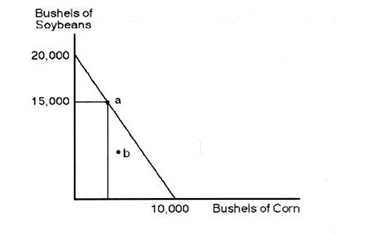A farmer has 200 acres of land on which he can grow soybeans or corn. An acre of land yields 200 bushels of soybeans or 100 bushels of corn. The figure above refers to the farmer’s
A) production possibilities curve.
B) substitution options curve.
C) trade—offs curve.
D) opportunity cost curve,
A) production possibilities curve.
You might also like to view...
Refer to the table above. Which of the following statements is true?
A) There is a surplus of 10 notebooks in the market when the price of one notebook is $8. B) There is a shortage of 4 notebooks in the market when the price of one notebook is $6. C) There is a shortage of 12 notebooks in the market when the price of one notebook is $4. D) There is a surplus of 4 notebooks in the market when the price of one notebook is $5.
The output expansion effect of the sale of a firm's last ?Q units of output is:
A. the additional revenue from selling ?Q units at price P(Q). B. the reduced revenue from selling (Q - ?Q) units at a lower price of P(Q). C. the additional revenue from selling ?Q units at price P(Q + ?Q). D. the reduced revenue from selling (Q - ?Q) units at a lower price of P(Q - ?Q).
Which of the following is a correct representation of the profit maximization condition for a monopoly?
A. MC = MR B. P = ATC + MR C. P = MR D. MR = MC + ATC
When the aggregate price level (P) is multiplied by real aggregate income (Y), the result is
A. the real aggregate price level. B. aggregate money demand. C. the aggregate money multiplier. D. nominal income.
